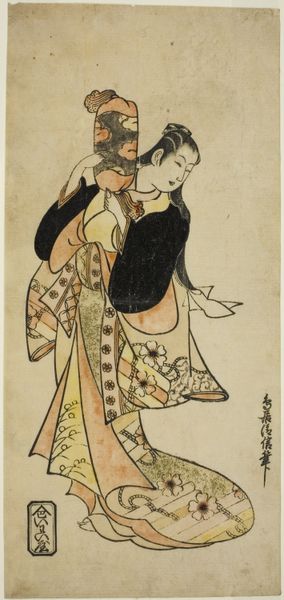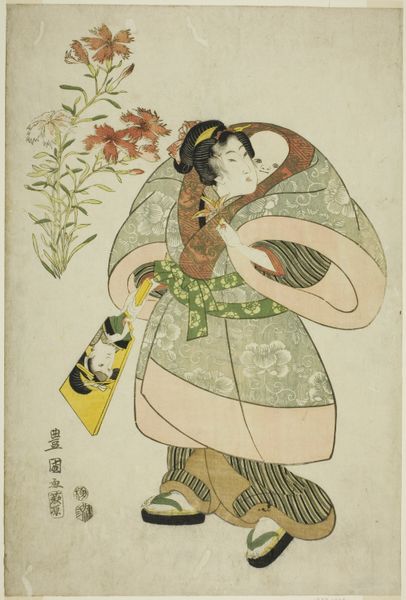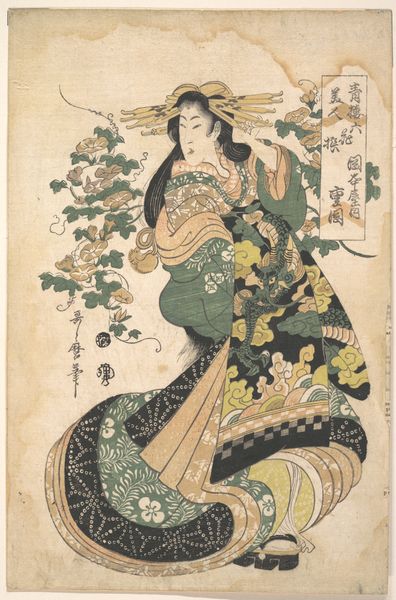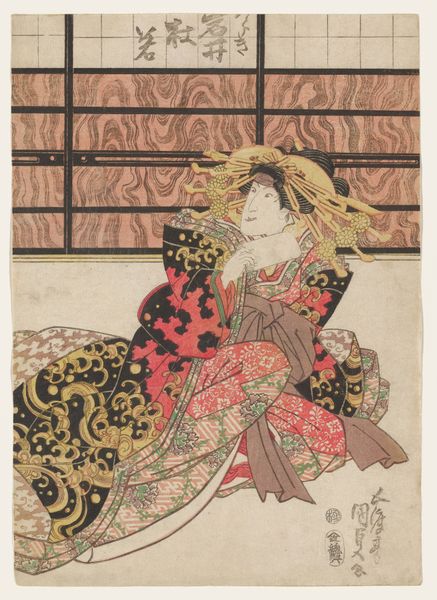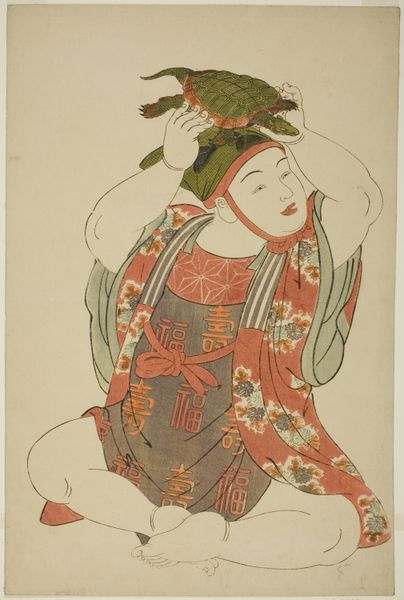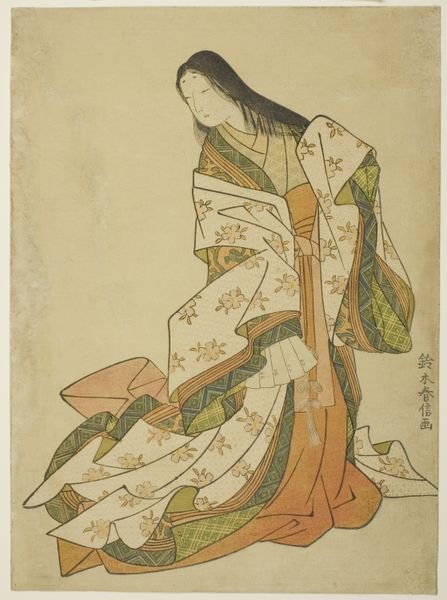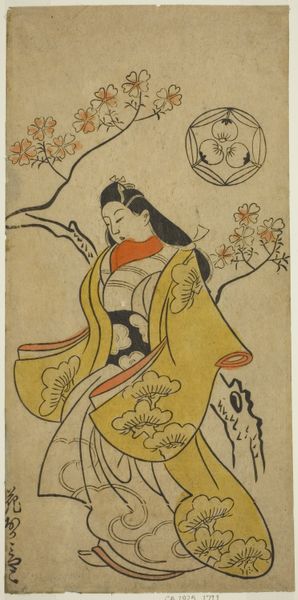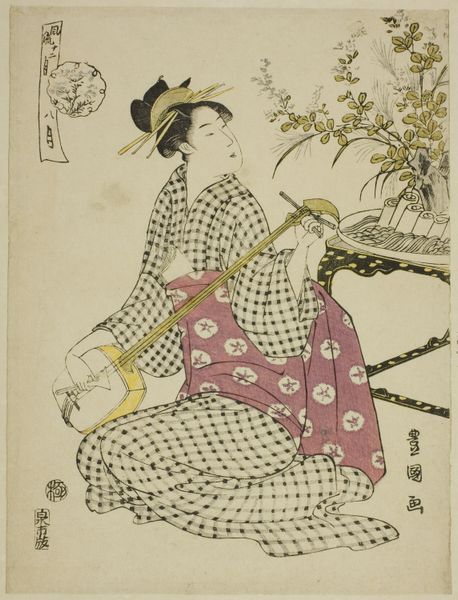
The actor Fujikawa Tomokichi II as Okaru, wife of Kanpei n.d.
0:00
0:00
print, paper, woodblock-print
#
portrait
# print
#
asian-art
#
ukiyo-e
#
figuration
#
paper
#
linocut print
#
woodblock-print
#
genre-painting
Dimensions: 13 7/16 × 8 5/8 in.
Copyright: Public Domain
Curator: What strikes me first about this woodblock print is the precarious pose, almost theatrical! Utagawa Kuniyasu captured Fujikawa Tomokichi II as Okaru with such vulnerable intensity. Editor: Absolutely. Vulnerability and the commodification of grief through art is such a salient tension. "The Actor Fujikawa Tomokichi II as Okaru, wife of Kanpei" encapsulates ukiyo-e's essence by presenting an idealized, gendered performance during the Edo period. The male actor embodying a distressed female role, it complicates contemporary conversations of gender performativity in theater. Curator: Precisely. Her hands, splayed as if reaching, it draws you in. I can almost feel the willow branch brushing my face as she perhaps stares up at it. What gets you thinking? Editor: That specific willow placement—above her, near a fan—reads as a conscious juxtaposition. The fan's implied luxury contrasts starkly with the natural, drooping branches. Are they visual symbols of the expectations and the burden of Okaru's loyalty versus her actual material circumstances and emotional capacity in that very moment? Is Kuniyasu playing with binaries here? Curator: Hmmm, yes I think so. The geometric pattern of the obi against the fluid lines of her robe--is there an underlying visual dialogue about control and freedom, almost as a stage for emotional outpouring. I find her costume enchanting. It's gorgeous but muted--with pale color and patterns it never threatens to eclipse her figure. Editor: It's also hard to separate it from the artistic constraints and consumer culture. The polychrome woodblock prints themselves served both aesthetic and political purposes, especially depicting kabuki actors. So her “look,” beyond character-specific adornment, also functions as period-specific fashionable signage, too, right? Curator: That's it. Every print in it's time was a fleeting window to now, preserving fleeting fashion statements. Her face however--it conveys raw emotion, a poignant stillness. Even through centuries of varnish you still feel her reach towards something. Editor: It really highlights how Kabuki theater enabled diverse gender expression by collapsing lived identities of both female characters with their male actors, into these visually complex forms. Her posture reads against the constraints you describe by still trying to "reach out". Curator: This exploration of this artwork reveals an exciting lens where theater, gender performativity, print culture, and our gaze overlap and still vibrate with intensity. Editor: A valuable lesson and viewing experience--I wonder what viewers in the future will read.
Comments
No comments
Be the first to comment and join the conversation on the ultimate creative platform.


